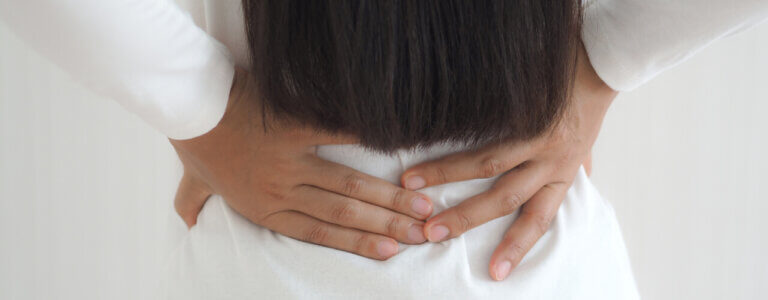The hip joint is the largest and one of the strongest joints in the human body. The hip and pelvic joints are utilized in almost every movement we make; hence it is obvious that they are sturdy enough to withstand repeated motion and regular wear and tear.
However, despite being durable, these ball and socket joints are not entirely invulnerable. With age and continuous wear and tear, the chances of damage to the hip joint increase, and so do the chances of hip pain.
With time, the cartilage that prevents friction of hip bones can wear down. Even the muscles and tendons can become weak. Over the years, injuries and accidents may also weaken the bones in the hip. Any of these reasons can lead to hip pain, discomfort, and decreased range of motion.
If you are experiencing hip pain, here are some lifestyle changes that will help you find lasting hip pain relief and improve your overall mobility and flexibility.
Common Causes Of Hip Pain
Before we look at the lifestyle changes that will naturally help you relieve hip pain symptoms, it is essential to know what is causing your hip pain. Here are some of the most common causes that lead to hip pain and loss of mobility.
Arthritis – Osteoarthritis & Rheumatoid Arthritis are the most common types of arthritis that affect the hip joints and cause pain and inflammation.
Hip Fracture
Bursitis
Tendonitis
Muscle Strain
Labral Tear
Sciatica
Cancer
Before beginning any course of treatment, it is vital to see a doctor who can determine the reason behind your pain and suggest treatment and medications accordingly. For this purpose, you can consult a physical therapist, an orthopedic, or a neurologist.
Excellent Tips To Treat Hip Pain Naturally Without Medications
Don’t Wait, Lose Weight
Obesity is one of the main culprits behind deteriorated joint health and joint pain. Many research studies have concluded that every pound that we put on adds 2-3 times extra pressure on your hip and knee joints.
The majority of your body weight rests on the hip and knee joints. Therefore losing weight can be incredibly advantageous for hip pain relief. Get in touch with a professional fitness consultant; they will help you determine your ideal weight and suggest the best ways to shred the extra weight.
Take the pressure off
Not only body fat, everything you carry in your hands or on your back can add pressure on your hip and knee joints. To avoid extra stress, you can use grocery carts and trolleys for shopping and luggage with wheels while traveling. If you carry a purse, consider replacing it with a backpack to distribute the weight across your back evenly.
While lifting weight, it is essential to maintain a proper posture. Do not bend your back while lifting heavy objects; instead, bend your knees, squat, and raise the object. This reduces the chances of muscle injury.
Stretching & Strengthening Exercises
Stretching and strengthening exercises have multiple advantages. These exercises improve blood circulation, promote healing, reduce pain and improve overall mobility. It can also help you strengthen the joints that support your hip joints, i.e., legs and core.
To perform these exercises correctly and derive optimal results, it is recommended that you work with a professional like a physical therapist.
Do the exercises in moderation; if you experience pain and discomfort during the workout, do not continue.
Avoid High-intensity workout
While workout and stretching exercises are considered beneficial for hip pain relief, it is not recommended to perform high-intensity activities.
Until you regain your strength and mobility, you should stick to lower intensity exercises like brisk walking or stationary bikes.
As you begin to get your strength back and the pain and soreness reduce, you can start increasing workout time and intensity.
Heal Without Heels
High heels can put your foot in an uncomfortable position and disturb the body’s alignment. Improper alignment can worsen your hip pain. Therefore, you should switch to flat shoes with good arch support and appropriate cushioning for effective pain relief.
Heat and Cold Packs
Heat and cold packs have been used for centuries to ease pain and inflammation. The heat helps increase circulation and promote healing, and the cold packs soothe inflammation and reduce swelling.
For warmth, you can take a cold shower or use a heating belt. For cold compress, you can use ice packs or bags of frozen vegetables.
While applying hot and cold packs, avoid direct contact with skin or cause irritation and redness.
Yoga for Hip Pain
If the main reasons behind your hip pain are a ‘sedentary lifestyle’ and incorrect posture, yoga might be an ideal solution for you.
Practicing yoga regularly prevents joint stiffness and improves blood circulation, which ultimately promotes healing.
Apart from facilitating pain relief, yoga also enhances stamina, improves breathing as well as the overall immune system. One hour of yoga every day can prove to be positively life-changing for everyone regardless of their age, sex, lifestyle choices, etc.
The Bottom Line
If left untreated, hip pain can increase and spread to the groin, thigh muscles, and lower back, adversely affecting your mobility and deteriorating your physical capabilities. By adopting the above-mentioned lifestyle changes, you will gradually be able to find permanent relief.
These lifestyle changes will take time to show results. Therefore, if you are experiencing acute pain or discomfort, it is advisable to consult a medical expert like a physical therapist who can recommend medications and treatments for immediate hip pain relief.


